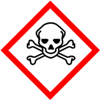 |
King of Chemicals Manufacturers |
Specifications, Properties, Uses, SDS of Sodium Fluoride USP IP BP Ph Eur EP Analytical Reagent FCC Food Grade Manufacturer Supplier Exporter Wholesale & Small Packs, CAS Number 7681-49-4. |
|
| King of Chemicals has several associated companies having accreditations like cGMP, GLP - FDA Approved Good Manufacturing Practice and Good Laboratory Practice of WHO standard, ISO-9001, ISO-14001, ISO/IEC 17025, ISO ISO-45000, HACCP, FSSC 220000, FSSAI, "REACH" Registered, Kosher & Halal Certified. e-CTD and DMF support can be made available if needed. We offer USP NF BP Ph Eur EP IP JP Analytical Reagent FCC Food Grade Chemicals & Nutraceuticals. | |
        |
|
Muby Chem Pvt. Ltd. is a several decades old group of companies, engaged in manufacturing, supplying, distributing, wholesale supplies of Sodium Fluoride USP IP BP Ph Eur EP Analytical Reagent FCC Food Grade for actual users, including retail or small pack supplies for research and development work.
We supply fine and speciality chemicals, pharmaceutical excipients, mineral fortifiers in chemically pure, analytical reagent grade, IP BP USP Ph Eur EP JP and other pharmaceutical grade monograph including FCC Food grade chemicals and Nutraceuticals at best prices. We and/or our associated units have all the facilities to supply as per cGMP standard observing good manufacturing practice and good laboratory practice. We can assure low microbial count and also offer a test certificate for the same. We maintain warehouses across USA, India, and UAE. Our group exports to USA, Canada, Mexico, Argentina, Brazil, Chile, Korea, Malaysia, Thailand, Indonesia, Europe, and several other parts of the world. We supply in wholesale container loads to small pack of few grams. Solid products may be specified for it size and shape as desired by the buyer.
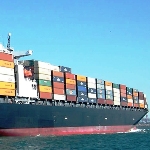
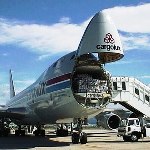
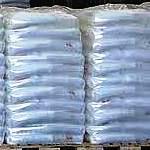
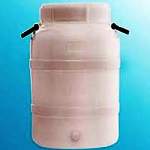
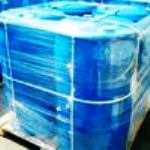
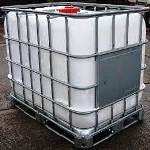
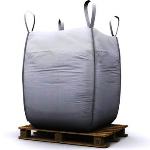
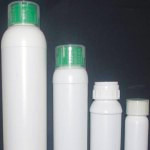
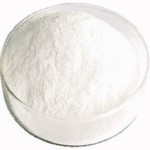
Sodium Fluoride CAS Number 7681-49-4
For Properties Specifications Uses of Sodium Fluoride Click Properties, Specifications, Uses, Price, Process of Sodium Fluoride Manufacturer.
For For SDS MSDS Sheet of Sodium Fluoride Click SDS Safety Data Sheet MSDS Sheet of Sodium Fluoride Manufacturer.
The Properties, Specifications, Monograph and Uses of Sodium Fluoride:
Sodium fluoride is an inorganic chemical compound with the formula NaF. A colorless solid, it is a source of the fluoride ion in diverse applications.
Sodium Fluoride USP Grade Specifications
NaF 41.99 -- CAS 7681-49-4
Sodium Fluoride contains not less than 98.0 percent and not more than 102.0 percent of NaF, calculated on the dried basis.
Identification:
A: Place 1 g in a platinum crucible in a well-ventilated hood, add 15 mL of sulfuric acid, and cover the crucible with a piece of clear, polished glass. Heat the crucible on a steam bath for 1 hour, remove the glass cover, rinse it in water, and wipe dry: the surface of the glass is etched.
B: A solution (1 in 25) responds to the tests for Sodium.
Tests:
Acidity or alkalinity: Dissolve 2.0 g in 40 mL of water in a platinum dish, add 10 mL of a saturated solution of potassium nitrate, cool the solution to 0 , and add 3 drops of phph. If no color appears, a pink color persisting for 15 seconds is produced by not more than 2.0 mL of 0.10 N sodium hydroxide. If the solution is colored pink by the addition of phph, it is rendered colorless by not more than 0.50 mL of 0.10 N sulfuric acid. Save the neutralized solution for the test for Fluosilicate.
Loss on drying: Dry it at 150 for 4 hours: it loses not more than 1.0% of its weight.
Fluosilicate: After the solution from the test for Acidity or alkalinity has been neutralized, heat to boiling, and titrate while hot with 0.10 N sodium hydroxide until a permanent pink color is obtained: not more than 1.5 mL of 0.10 N sodium hydroxide is required.
Chloride: Dissolve 300 mg in 20 mL of water, and add 200 mg of boric acid, 1 mL of nitric acid, and 1 mL of 0.1 N silver nitrate: any turbidity produced is not greater than that of a blank to which has been added 1.0 mL of 0.0010 N hydrochloric acid (0.012%).
Heavy metals: To 1 g, in a platinum dish or crucible, under a hood, add 1 mL of water and 3 mL of sulfuric acid, and heat at as low a temperature as practicable until all of the sulfuric acid has been expelled. Dissolve the residue in 20 mL of water, neutralize the solution to phph with ammonium hydroxide, add 1 mL of glacial acetic acid, dilute with water to 45 mL, filter, and use 30 mL of the filtrate for the test: the limit is 0.003%.
Assay: [NOTE-Store all solutions, except the Buffer solution, in plastic containers.]
Buffer solution: Dissolve 57 mL of glacial acetic acid, 58 g of sodium chloride, and 4 g of (1,2-cyclohexylenedinitrilo)tetraacetic acid in 500 mL of water. Adjust with 5 N sodium hydroxide to a pH of 5.25 ± 0.25, dilute with water to 1000 mL, and mix.
Standard preparations: Dissolve an accurately weighed quantity of USP Sodium Fluoride RS quantitatively in water to obtain a solution containing 420 µg per mL. Each mL of this solution (Standard preparation A) contains 190 µg of fluoride ion (10 2 M). Transfer 25.0 mL of Standard preparation A to a 250-mL volumetric flask, dilute with water to volume, and mix. This solution (Standard preparation B) contains 19 µg of fluoride ion per mL (10 3 M). Transfer 25.0 mL of Standard preparation B to a 250-mL volumetric flask, dilute with water to volume, and mix. This solution (Standard preparation C) contains 1.9 µg of fluoride ion per mL (10 4 M).
Assay preparation: Transfer about 100 mg of Sodium Fluoride, accurately weighed, to a 250-mL volumetric flask. Add 50 mL of water, mix for 5 minutes, dilute with water to volume, and mix. Transfer 10.0 mL of this solution to a 50-mL volumetric flask, dilute with water to volume, and mix.
Procedure: Pipet 20 mL of each Standard preparation and of the Assay preparation into separate plastic beakers each containing a plastic-coated stirring bar. Pipet 20 mL of Buffer solution into each beaker. Concomitantly measure the potentials (see pH 791 ), in mV, of the solutions from the Standard preparations and of the solution from the Assay preparation, with a pH meter capable of a minimum reproducibility of ±0.2 mV and equipped with a fluoride-specific ion-indicating electrode and a calomel reference electrode. [NOTE—When taking measurements, immerse the electrodes in the solution, stir on a magnetic stirrer having an insulated top until equilibrium is attained (1 to 2 minutes), and record the potential. Rinse and dry the electrodes between measurements, taking care to avoid damaging the crystal of the specific-ion electrode.] Plot the logarithms of the fluoride-ion concentrations, in µg per mL, of the Standard preparations versus potential, in mV. From the measured potential of the Assay preparation and the standard response line, determine the concentration, C, in µg per mL, of fluoride ion in the Assay preparation. Calculate the quantity, in mg, of fluoride ion in each mL of the Oral Solution taken by the formula:
0.5(C / V)
in which C is the determined concentration of fluoride, in µg per mL, in the Assay preparation, and V is the volume, in mL, of Oral Solution taken.
Calculate the quantity, in mg, of NaF in the portion of Sodium Fluoride taken by the formula:
(41.99 / 18.998)(1.25C)
in which 41.99 is the molecular weight of sodium fluoride; 18.998 is the atomic weight of fluorine; and C is the determined concentration of fluoride, in microgm per mL, in the Assay preparation.
Sodium Fluoride BP Grade Ph Eur Specifications
DEFINITION
Content: 98.5 per cent to 100.5 per cent (dried substance).
CHARACTERS
Appearance: White or almost white powder or colourless crystals.
Solubility: Soluble in water, practically insoluble in ethanol (96 per cent).
IDENTIFICATION
A. To 2 ml of solution S (see Tests) add 0.5 ml of calcium chloride solution R. A gelatinous white precipitate is formed that dissolves on adding 5 ml of ferric chloride solution R1.
B. To about 4 mg add a mixture of 0.1 ml of alizarin S solution R and 0.1 ml of zirconyl nitrate solution R and mix. The colour changes from red to yellow.
C. Solution S gives reaction (a) of sodium.
TESTS
Solution S: Dissolve 2.5 g in carbon dioxide-free water R without heating and dilute to 100 ml with the same solvent.
Appearance of solution: Solution S is clear (2.2.1) and colourless.
Acidity or alkalinity: Dissolve 2.5 g of potassium nitrate R in 40 ml of solution S and dilute to 50 ml with carbon dioxide-free water R. Cool to 0C and add 0.2 ml of phph solution R. If the solution is colourless, not more than 1.0 ml of 0.1 M sodium hydroxide is required to produce a red colour that persists for at least 15 s. If the solution is red, not more than 0.25 ml of 0.1 M hydrochloric acid is required to change the colour of the indicator.
Chlorides: Maximum 200 ppm.
Fluorosilicates: Heat to boiling the neutralised solution obtained in the test for acidity or alkalinity and titrate whilst hot. Not more than 0.75 ml of 0.1 M sodium hydroxide is required to change the colour of the indicator to red.
Sulphates: Maximum 200 ppm.
Loss on drying: Maximum 0.5 per cent, determined on 1.000 g by drying in an oven at 130C for 3 h.
ASSAY
Dissolve 0.100 g in water R and dilute to 60 ml with the same solvent. Titrate with 0.1 M La-nitrate (La(NO3)3), determining the end-point potentiometrically (2.2.20) using a fluorideselective
indicator electrode and a silver-silver chloride reference electrode.
1 ml of 0.1 M La-nitrate ( La(NO3)3) is equivalent to 12.60 mg of NaF.
We also manufacture Sodium Fluoride of EP IP grade.
Sodium Fluoride Analytical Reagent Grade Specifications
Molecular Formula: NaF
Formula Weight 41.99
CAS Number 7681-49-4
REQUIREMENTS
Assay: 99% NaF
MAXIMUM ALLOWABLE
Insoluble matter: 0.02%
Loss on drying at 150C: 0.3%
Chloride (Cl): 0.005%
Titrable acid: 0.03 meq/g
Titrable base: 0.01 meq/g
Sodium fluosilicate (Na2SiF6): 0.1%
Sulfate (SO4): 0.03%
Sulfite (SO2): 0.005%
Heavy metals (as Pb): 0.003%
Iron (Fe): 0.003%
Potassium (K): 0.02%.
The MSDS-SDS Hazard Statement of Sodium Fluoride:
Sodium Fluoride SDS, Safety Data Sheet
MSDS Sheet, Material Safety Data Sheet 10-Feb-25
1. Product Identification
Product Name & Other Names: Sodium Fluoride or NaF
CAS No.: 7681-49-4
EINECS EC Number: 231-667-8
Relevant uses and uses advised against (if any): Industrial Manufacturing
Supplier: As per letterhead.
2. Hazards Identification
GHS, Globally Harmonized System Classification in accordance with 29 CFR 1910
Classification according to Regulation (EC) No 1272/2008
Acute toxicity, oral Category 3 (H301)
Skin corrosion/irritation Category 2 (H315)
Serious eye damage/eye irritation Category 2A (H319)
Labeling according to GHS & Regulation (EC) No 1272/2008
GHS Label Elements  Irritant |
GHS Label Elements |
Signal Words: Danger
Hazard statements:
H301 Toxic if swallowed.
H315 Causes skin irritation.
H319 Causes serious eye irritation.
Precautionary statements:
P264: Wash --- thoroughly after handling.
P270: Do not eat, drink or smoke when using this product.
P273 Avoid release to the environment.
P280: Wear protective gloves/protective clothing/eye protection/face protection.
P330: Rinse mouth.
P301+P310: IF SWALLOWED: Immediately call a POISON CENTER or doctor/physician.
P302+P352: IF ON SKIN: Wash with soap and water.
P305+P351+P338: IF IN EYES: Rinse cautiously with water for several minutes. Remove
contact lenses, if present and easy to do. Continue rinsing.
P332+P313: If skin irritation occurs: Get medical advice/attention.
P337+P313: If eye irritation persists get medical advice/attention.
Other Hazards: AUH032 Contact with acids liberates very toxic gas.
3. Composition/Information on Ingredients
Product Name & Other Names: Sodium Fluoride or NaF
CAS No.: 7681-49-4
EINECS EC Number: 231-667-8
4. First Aid Measures
Always seek medical attention after first aid measures are provided.
Inhalation: Remove to fresh air. If not breathing, give artificial respiration. If breathing is difficult, give oxygen. Get medical attention.
Ingestion: Contact a poison control center or physician for treatment advice. Never give anything by mouth to an unconscious person. Get medical attention.
Skin Contact: Wipe off excess material from skin then immediately flush skin with plenty of water for at least 15 minutes. Remove contaminated clothing and shoes. Get medical attention.
Eye Contact: Immediately flush eyes with plenty of water for at least 15 minutes, lifting lower and upper eyelids occasionally. Get medical attention immediately.
5. Fire Fighting Measures
Flammability of the Product: Non-flammable.
Products of Combustion: During a fire, irritating and highly toxic gases may be generated by thermal decomposition or combustion. Hydrogen fluoride, Sodium oxides can be formed.
Fire: Sodium Fluoride is not considered to be a fire hazard.
Fire Extinguishing Media: Use water spray or fog for cooling exposed containers. Fine water spray, normal foam, dry agent (carbon dioxide, dry chemical powder) can be used. Exercise caution when fighting any chemical fire. Avoid (reject) fire-fighting water to enter environment.
Special Information: In the event of a fire, wear full protective clothing and NIOSH-approved self-contained breathing apparatus with full face piece operated in the pressure demand or other positive pressure mode.
6. Accidental Release Measures
Personal precautions, protective equipment and emergency procedures: Avoid breathing dust/fumes/gas/mist/vapors/spray. Use individual protective equipment (waterproof boots, suitable protective clothing, safety glasses, etc.).
Environmental precautions: Do not let the product enter drains, soil or water sources.
Methods and materials used for containment Cleanup procedures and Storage:
Small Spill: Avoid dust formation. Avoid breathing dust. Ensure adequate ventilation. Use appropriate tools to put the spilled solid in a convenient waste disposal container.
Large Spill: Contain spilled material. Avoid touching the spilled material. Do not let the product enter drains. Use a shovel to put the material into a convenient waste disposal container.
7. Handling and Storage
Precautions for safe handling: Toxic if swallowed. Do not ingest. Apply according to good manufacturing and industrial hygiene practices. Ensure proper ventilation. Provide appropriate exhaust ventilation at places where dust is formed. Wash thoroughly after handling. Do not drink, eat or smoke while handling. Avoid contact with skin, eyes and clothing. Minimize dust generation. Avoid breathing dust/fumes/gas/mist/vapors/spray. Keep container tightly closed. Avoid ingestion and inhalation. Use individual protective equipment (waterproof boots, suitable protective clothing, safety glasses, etc.).
Conditions for safe storage, including any incompatibilities: Store in cool, dry and ventilated area away from heat sources and protected from sunlight in tightly closed original container. Keep air contact to a minimum. Do not leave the material container open. Store protected from heat, sparks and ignition sources and incompatible materials. Avoid contact with skin and eyes. Avoid inhalation of dust/mist/vapor. Do not store with incompatibles like acids and moisture.
8. Exposure Controls/Personal Protection
Airborne Exposure Limits: ACGIH TLV, OSHA PEL & NIOSH IDLH Permissible 2.5 mg/m3 TWA (dust and mist, as F).
Ventilation System: A system of local and/or general exhaust is recommended to keep employee exposures as low as possible.
Personal Respirators (NIOSH Approved): For conditions of use where exposure to dust or mist is apparent and engineering controls are not feasible, a particulate respirator may be worn.
Skin Protection: Wear protective gloves and clean body-covering clothing.
Eye Protection: Use chemical safety goggles and/or full face shield where dusting or splashing of solutions is possible. Maintain eye wash fountain and quick-drench facilities in work area.
Other Control Measures: Maintain good housekeeping in work area. Handle in accordance with good industrial hygiene and safety practice.
9. Physical and Chemical Properties
Appearance: Sodium Fluoride is transparent or white powder or crystals.
Odor: It is odorless.
Odor threshold: Not applicable.
pH: 7 to 10 for 10% solution.
Relative density: 2.76
Boiling Point: 1695C.
Melting Point: 996C.
Flash point: No information found.
Auto-ignition temperature: No information found.
Decomposition temperature: No information found.
Upper/lower flammability or explosive limits: No information found.
Vapor pressure: No information found.
Vapor density: No information found.
Evaporation rate: No information found.
Flammability (solid, gas): No information found.
Partition coefficient: n-octanol/water: No information found.
Solubility: It is freely soluble in water.
Viscosity: No information found.
10. Stability and Reactivity
Stability: Stable under ordinary conditions of use and storage.
Hazardous Decomposition Products: Oxides of sodium and hydrochloric acid fumes.
Hazardous Polymerization: Will not occur.
Incompatibilities: Acids.
Conditions to Avoid: Incompatibles and moisture. Avoid Heat, Moisture & incompatibles.
11. Toxicological Information
Toxicity data
LD50 Oral - Rat - female - 148,5 mg/kg
LD50 Intravenous - Rat - 26 mg/kg
LD50 oral - Rabbit - 200 mg/kg
Carcinogenic Effects: Not known to be a carcinogen by IARC NTP ACGIH OSHA.
Mutagenic Effects: No information found.
Teratogenic Effects: No information found.
Developmental Toxicity: No information found.
12. Ecological Information
Toxicity to fish: mortality NOEC- Cyprinodon variegatus (sheepshead minnow) - 500 mg/l - 96h
LC50 - Oncorhynchus mykiss (rainbow trout) - 200 mg/l - 96 h
Toxicity to daphnia and other aquatic invertebrates: EC50 - Daphnia magna (Water flea) - 98 mg/l - 48 h
Environmental Fate: This substance/mixture contains no components considered to be either persistent, bioaccumulative and toxic (PBT), or very persistent and very bioaccumulative (vPvB) at levels of 0.1% or higher.
13. Disposal Considerations
This product is a registered pesticide. Pesticide wastes are acutely hazardous. Improper disposal is a violation of Law. Whatever cannot be saved for recovery or recycling should be managed in an appropriate and approved waste disposal facility.
14. Transport Information
USA DOT Classification:
UN No: 1690
Transport Hazard Class: 6.1 Toxic
Packing Group: III
Proper Shipping Name or Technical Name: SODIUM FLUORIDE, SOLID
Canada TDG Classification:
UN No: 1690
Transport Hazard Class: 6.1 Toxic
Packing Group: III
Proper Shipping Name or Technical Name: SODIUM FLUORIDE, SOLID
IATA
UN No: 1690
Transport Hazard Class: 6.1 Toxic
Packing Group: III
Proper Shipping Name or Technical Name: SODIUM FLUORIDE, SOLID
ADR/RID:
UN No: 1690
Transport Hazard Class: 6.1 Toxic
Packing Group: III
Proper Shipping Name or Technical Name: SODIUM FLUORIDE, SOLID
15. Regulatory Information
USA:
SARA 311/312: See section 2.
16. Other Information
Disclaimer:
*************************
Our company provides this Sodium Fluoride MSDS sheet in good faith but makes no representation as to its comprehensiveness or accuracy. This SDS sheet is intended only as a guide to the appropriate precautionary handling of the material by a properly trained person using this product. The above information has been compiled from various sources and has the possibility of discrepancy and being out-dated information. Individuals receiving the information must exercise their independent judgment and do further search in determining its appropriateness for a particular purpose. In no case shall our company be liable to loss or damages by the product user.
*************************

Sodium Fluoride Manufacturers, Suppliers, Exporters, Wholesalers:
King of Chemicals manufacturers

Plot No. 2900/46&47 + 2900/163to167, GIDC, Ankleshwar, Dist. Bharuch, India
India, USA, UAE
TEL: (Office) 91-22-23774610, 91-22-23723564
e-mail: info@kingofchemicals.com
Copyright and Usual Disclaimer is Applicable --- April 6, 2025
If I give you “My Word” Nobody can undo it.
If I sign an “Agreement” my Lawyer will undo it
Our products are for industrial and laboratory use only. The user must test the material before use. We are not dispensing chemists or druggist and do not offer over the counter type (OTC) products for medical use by individuals.
We and our associates manufacture pure chemicals surpassing Monograph Specifications of Analytical Reagent Standards, British & European Pharmacopoeia BP Ph Eur EP Standard, US Pharmacopoeia USP NF Standard, Indian Pharmacopoeia IP Standard, Japan Pharmacopoeia JP Standard, FCC Food Grade Standard. |
|
